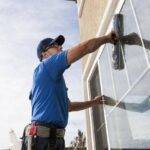When refurbishing stairs, an important part of the preparation process is smoothing down the timber surfaces ready for a new covering – whether that be carpet, paint, varnish or wood stain. The most effective way of removing the old coating is to sand down the staircase. Here’s how to do it:
First of all, if the stairs were previously carpeted, remove all tack strips, staples and nails left in the wood. Hammer them below the surface if they are too hard to extract. Use wood putty to fill in any cracks and holes, and leave to dry.
Large stair components such as treads and risers are best tackled with a sanding machine (remember to wear a dust mask and safety glasses). There are various types including:
Belt sanding machine – ideal for large, flat expanses such as staircase treads
Random orbital sanding machine – can be used on a variety of flat and slightly curved surfaces
Detail sanding machine – suitable for light sanding in small spaces and corners
Sheet orbital sanding machine – good for light-duty tasks and corners
Belt sanding machine
This powerful tool works by means of a sandpaper belt that turns on rollers at each end of the machine. It is ideal for heavy-duty tasks involving large, flat surfaces that require speed rather than finesse. This makes it perfect for sanding down stair treads and risers. Beginners beware, however – you can easily ruin the surface if you’re not careful.
You should begin with a coarse belt of 40 or 60 grits, then change to finer 120 or 180 grit belts to get the surface smooth enough. Sand parallel with the wood grain and keep the machine moving all the time for an even result. Only light pressure is required, so let the weight of the tool do the work.
Random orbital sanding machine
Popular with carpenters, joiners and DIY users alike, this type is the most versatile, and is easier to use than a belt sanding machine.
The tool works using a round abrasive disc which vibrates while rotating at speed. It moves in an elliptical (irregular) orbit, which ensures that no part of the disc travels along the same path twice. This almost eliminates the chance of leaving swirl marks. You can use it for both coarse and fine finishing work by attaching different grades of disc.
When you start sanding, use long overlapping strokes, keeping the tool moving constantly. Hold it level to avoid creating swirls, and only apply light pressure. If you have never used a sanding machine before, practise first on some scrap timber until you get a feel for it.
Finishing sanding machine
Also known as a sheet orbital sanding machine, this is a good choice for beginners as it is unlikely to damage the work surface. The tool works using rectangular or square sheets of sandpaper fixed to a vibrating spinning pad.
Small, light and easy to operate, it is ideally suited to fine sanding, rounding off sharp edges, removing old varnish and paint, and smoothing hardened wood putty. It can get into corners too, thanks to the square base plate.
Detail sanding machine
Compact and lightweight, a detail sanding machine has a small triangular base plate which allows you to reach into small or awkwardly shaped spaces. It is designed for jobs requiring a high degree of accuracy – perfect for sanding the corners of treads and risers, for example.
Don’t expect miracles. This machine is not intended for heavy-duty work, so you will need to go carefully. Move the tool slowly and evenly over the surface for a consistent finish, and avoid pressing too hard.
Sanding spindles
When you come to the spindles, a machine will be of limited use. Instead, wrap strips of sandpaper around the shafts and pull them back and forth. You may have to resort to using a chemical paint stripper on intricately shaped stair parts.
Sanding is hard work! If you need to remove every last trace of the old coating from your spindles – in order to apply wood stain or clear varnish, for example – consider replacing them with new spindles instead. You would save an awful lot of time and effort.

